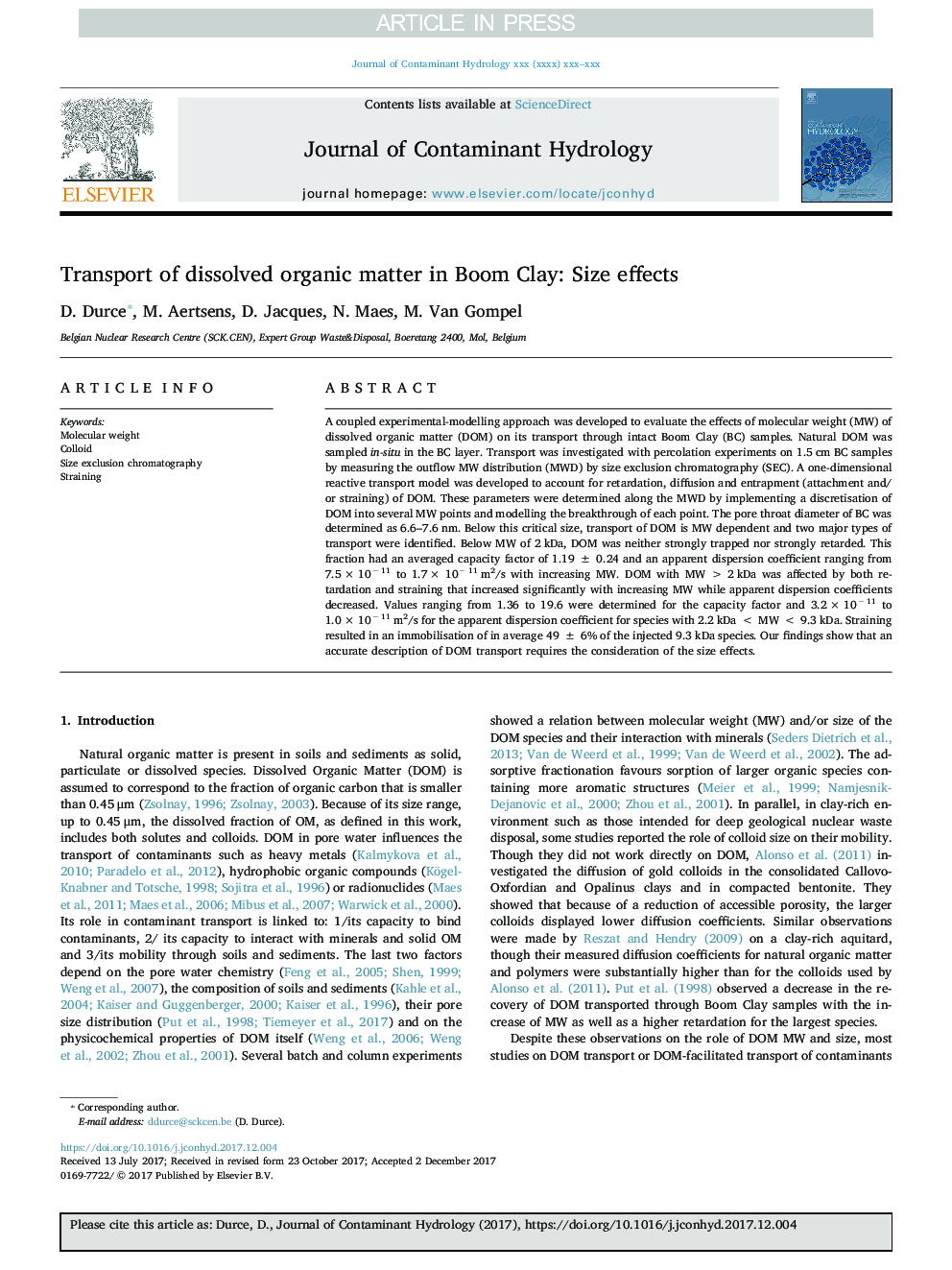| Article ID | Journal | Published Year | Pages | File Type |
|---|---|---|---|---|
| 8885853 | Journal of Contaminant Hydrology | 2018 | 8 Pages |
Abstract
A coupled experimental-modelling approach was developed to evaluate the effects of molecular weight (MW) of dissolved organic matter (DOM) on its transport through intact Boom Clay (BC) samples. Natural DOM was sampled in-situ in the BC layer. Transport was investigated with percolation experiments on 1.5 cm BC samples by measuring the outflow MW distribution (MWD) by size exclusion chromatography (SEC). A one-dimensional reactive transport model was developed to account for retardation, diffusion and entrapment (attachment and/or straining) of DOM. These parameters were determined along the MWD by implementing a discretisation of DOM into several MW points and modelling the breakthrough of each point. The pore throat diameter of BC was determined as 6.6-7.6 nm. Below this critical size, transport of DOM is MW dependent and two major types of transport were identified. Below MW of 2 kDa, DOM was neither strongly trapped nor strongly retarded. This fraction had an averaged capacity factor of 1.19 ± 0.24 and an apparent dispersion coefficient ranging from 7.5 Ã 10â 11 to 1.7 à 10â 11 m2/s with increasing MW. DOM with MW > 2 kDa was affected by both retardation and straining that increased significantly with increasing MW while apparent dispersion coefficients decreased. Values ranging from 1.36 to 19.6 were determined for the capacity factor and 3.2 Ã 10â 11 to 1.0 Ã 10â 11 m2/s for the apparent dispersion coefficient for species with 2.2 kDa < MW < 9.3 kDa. Straining resulted in an immobilisation of in average 49 ± 6% of the injected 9.3 kDa species. Our findings show that an accurate description of DOM transport requires the consideration of the size effects.
Related Topics
Physical Sciences and Engineering
Earth and Planetary Sciences
Earth-Surface Processes
Authors
D. Durce, M. Aertsens, D. Jacques, N. Maes, M. Van Gompel,
